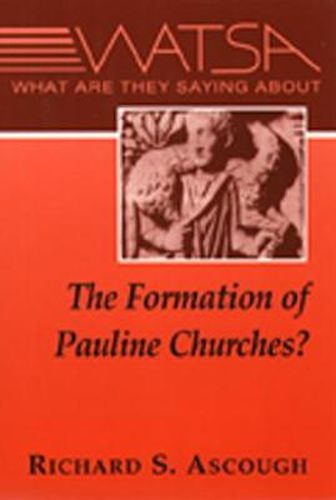Readings Newsletter
Become a Readings Member to make your shopping experience even easier.
Sign in or sign up for free!
You’re not far away from qualifying for FREE standard shipping within Australia
You’ve qualified for FREE standard shipping within Australia
The cart is loading…






The early church was made up of a myriad of local churches, each with different settings, problems and ideas regarding how its community should be structured. What Are They Saying About the Formation of Pauline Churches? surveys the different models available in the Greco-Roman period for understanding how Paul’s Christian groups ordered their communities. There are four models: the synagogue, the philosophical school, the ancient mystery cult and the voluntary association. Dr. Ascough devotes a chapter to each model and to the authors who use it to understand Pauline churches. The archaeological and literary data are coordinated with data from the Pauline letters to reveal the strengths and weaknesses of the models for understanding these churches. In the end, all four models are helpful and no one model is adequate to explain all the aspects of each Pauline church.
This is a superb book for those seeking an overall view of the debate on the culture and organization of the first Christian communities.
$9.00 standard shipping within Australia
FREE standard shipping within Australia for orders over $100.00
Express & International shipping calculated at checkout
The early church was made up of a myriad of local churches, each with different settings, problems and ideas regarding how its community should be structured. What Are They Saying About the Formation of Pauline Churches? surveys the different models available in the Greco-Roman period for understanding how Paul’s Christian groups ordered their communities. There are four models: the synagogue, the philosophical school, the ancient mystery cult and the voluntary association. Dr. Ascough devotes a chapter to each model and to the authors who use it to understand Pauline churches. The archaeological and literary data are coordinated with data from the Pauline letters to reveal the strengths and weaknesses of the models for understanding these churches. In the end, all four models are helpful and no one model is adequate to explain all the aspects of each Pauline church.
This is a superb book for those seeking an overall view of the debate on the culture and organization of the first Christian communities.